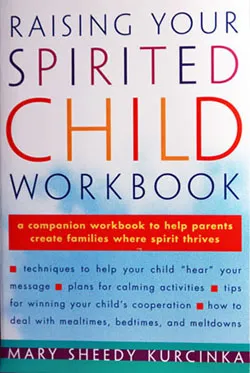Words to Use to Introduce Your Child to Problem Solving Skills

Quick Tips from "Raising Your Spirited Child", and "Kids, Parents and Power Struggles"
Developed by: Mary Sheedy Kurcinka, Ed.D and Lynn Jessen, MA.https://www.parentchildhelp.com/
WHAT IS PROBLEM SOLVING:
Saturday morning was supposed to be a fun family outing, but when it came time to go five-year-old Abby wanted to stay home. Eight-year-old Mason insisted on going to the park which ten-year-old Benjamin declared boring and instead adamantly advocated for biking. Despite the differences the morning did not blow-up. Mom asked each child, what about their chosen activity was important to them. Abby wanted some alone time. Mason wanted to swing, and Benjamin just wanted to bike.
“We have to find a way to work together,” mom told them.
“What could we do to that would make everyone happy?”
Mason declared, “Go to the park!”
“Would that make you happy?” She asked both Abby and Benjamin.
“No!” They asserted.
“Okay we need to think of three other things we could do.” Mom replied. Silence fell in the room.
Then Mason suggested, “What if we bike to the park?”
Benjamin liked that idea. Abby did not.
That is when mom suggested, “What if we stay home for the next 30 minutes to have alone time, and then bike to the park? Would that make you happy?”
All three children nodded in agreement.
How, you may wonder did mom ever pull this off? This was a problem-solving family!
Problem solving is a skill that allows families and individuals to work together. It is a process that moves us from positions to interests. Positions, such as I want to stay home, or I want to ride bikes, lock us into conflicts. Interests, which identify why this is important allow us to think flexibly and work together. Problem-solving skills form the basis for effective communication, and cooperation.
The formula for effective problem solving includes:
- Identify the child’s feelings and needs.
- Define the problem.
- Invite the child to collaborate in brainstorming potential solutions.
- Select a solution that works for everyone.
Problem solving skills are especially helpful to resolve on-going issues, but sometimes can also be used in the “heat of the moment,” to prevent a meltdown or power struggle.
WORDS TO USE TO INTRODUCE YOUR CHILD TO PROBLEM SOLVING SKILLS
1. Identify the child’s feelings and needs. A problem must be understood before it can be solved, which is why it is essential to begin by seeking understanding.
- What’s up?
- What about this is important to you?
- What don’t you like about...
- If children are unable to voice their feelings and needs, guess.
- Did that surprise you?
- I am wondering if you have a different plan.
- Did you want a turn?
- Do you need space?
Sometimes identifying feelings requires patience. Allow time for children to think.
2. Define the problem. In The Explosive Child, Ross Greene, Ph.D. writes, “To define the problem means to clarify the concerns of both parties. And then work toward solutions that address those concerns.”
- "I see two children who want the same chair."
- "I see you do not want to put on your coat today."
- "You want a turn and your brother is not yet finished."
- "I noticed it is hard to leave the park when your friends are still playing."
3. Invite the child to collaborate in brainstorming potential solutions.
- “When two children want the same chair there are many things, we could do to make everyone happy. Can you think of three things we could do?”
If the children do not have any ideas offer them.
- “You could use it together.”
- “You could give the chair to the one who had it first.”
- “What if I helped you and we find another chair.”
4. Select a solution that works for everyone. A child’s first reaction may be to say, “I’ll have it first.”
- That is when the adult may say: “Let’s ask the other child, if that solution makes him happy.”
- If it does not, then remind the children that "the solution must work for everyone. They need to choose a different option."
- If they refuse, the adult can say: “If you do not pick a solution, then I’m going to put away the chair until you can decide.”
Then the adult puts away the chair until the children come back and say they are ready to decide. Quickly children learn that it is important to work together to find a solution that makes everyone happy – and most importantly that they can!
ADDITIONAL RESOURCES TO TEACH PROBLEM SOLVING SKILLS:
- "Raising Your Spirited Child" by Mary Sheedy Kurcinka, Ed.D
- "Kids, Parents and Power Struggles" by Mary Sheedy Kurcinka, Ed.D
- "The Explosive Child" by Ross Greene, Ph.D.
- "How to Talk So Kids Will Listen" by Adele Faber and Elaine Mazlish
Next week we will begin applying the steps to typically tough daily situations.
Display All Posts
Search by Topic:
Popular Posts:
- When your child yells at you: Expecting and Coaching respectful behavior
- 5 Tips to Stop the 'Strike out Tantrums:' Hitting, Biting, Kicking and Name-calling
- Why is my child suddenly clingy?
- Ten Steps to a Peaceful Bedtime for Your Spirited Child
- When Your Child’s Meltdowns are Ruining Vacation






